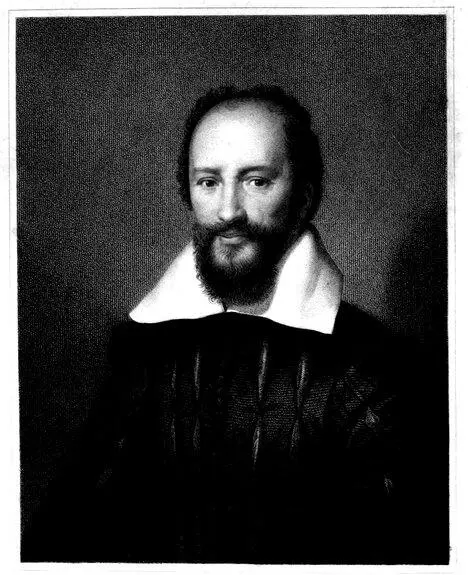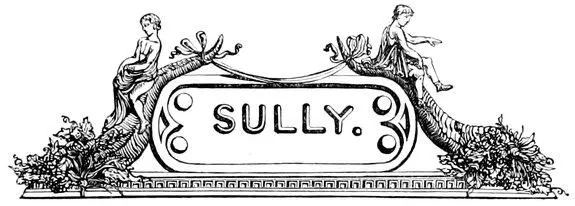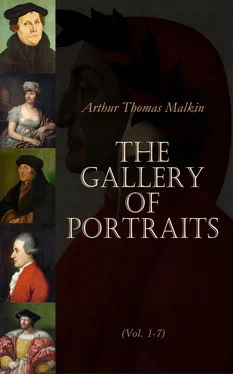We must also ascribe to Halley the first correct application of the barometer to the measurement of the heights of mountains. Mariotte, who first enunciated the remarkable law that the elastic forces of gases are in the inverse proportion of the spaces which they occupy, had previously given a formula for the determination of these same heights, entirely wrong in principle, and inapplicable in practice. Halley, whose profound mathematical knowledge made him fully equal to the task, investigated and discovered the common formula, which, with some corrections for the temperature of the mercury in the barometer and the air without it, is in use at this day. We have already mentioned that Halley sailed to various parts of the earth with a view to determine the variation of the magnet. The result of his labours was communicated to the Royal Society in a map of the lines of equal variation, and also of the course of the trade-winds. He attempted to explain the phenomena of the compass by supposing that the earth is one great magnet, having four poles, two near each pole of the equator; and further accounts for the variation which the compass undergoes from year to year in the same place, by imagining a magnetic sphere, interior to the surface of the earth, which nucleus or inner globe turns on an axis with a velocity of rotation very little differing from that of the earth itself. This hypothesis has shared the fate of many others purely mathematical; that is, invented to show how the observed phenomena might be produced, without any ground of observation for believing that they really are so produced. If we put together the astronomical and geographical discoveries of Halley, and remember that the former were principally confined to those points which bear upon the subjects of the latter, we shall be able to find a title for their author less liable to cavil than that of the Prince of Astronomers, which has sometimes been bestowed upon him; we may safely say that no man, either before or since, has done more to improve the theoretical part of navigation, by the diligent observation alike of heavenly and earthly phenomena.
We pass over many minor subjects, such as his improvement of the diving-bell, or his measurement of the quantity of fluid abstracted by evaporation from the sea, to come to an application of science in which he led the way—the investigation of the law of mortality. From observations communicated to the Royal Society of the births and deaths in the city of Breslau, he constructed the first table of mortality, which was in a great measure the foundation of the celebrated hypothesis of De Moivre, that the decrements of human life are nearly equal at all ages; that is, that out of eighty-six persons born, one dies every year, until all are gone. Halley’s table as might be expected, was not very applicable to human life in England, either then or now, but the effect of example is conspicuous in this instance. Before the death of Halley the tables of Kerseboom were published, and four years afterwards, those of De Parcieux.
We will not enlarge on the purely mathematical investigations of Halley, which would possess but little interest for the general reader. We may mention, however, his method for the solution of equations, his ‘Analogy of the Logarithmic Tangents to the Meridian Line, or sum of the secants,’ his algebraic investigation of the place of the focus of a lens, and his improvement of the method of finding logarithms. From the latter we quote a sentence, which, to the reader, for whose benefit we have omitted entering upon any discussion of these subjects, will appear amusing enough, if indeed he does not shrink to see how much he has degenerated from his ancestors. After describing a process which contains calculation enough for most people; and which further directs to multiply sixty figures by sixty figures, he adds, “If the curiosity of any gentleman that has leisure, would prompt him to undertake to do the logarithms of all prime numbers under 100,000 to 25 or 30 figures, I dare assure him that the facility of this method will invite him thereto; nor can anything more easy be desired. And to encourage him, I here give the logarithms of the first prime numbers under 20 to 60 places.” One look at these encouraging rows of figures would be sufficient for any but a calculating boy.
No one who is conversant with the mathematics and their applications can read the life of the mathematicians of the seventeenth century without a strong feeling of respect for the manner in which they overcame obstacles, and of gratitude for the labour which they have saved their successors. The brilliancy of later names has, in some degree, eclipsed their fame with the multitude; but no one acquainted with the history of science can forget, how with poor instruments and imperfect processes, they achieved successes, but for which Laplace might have made the first rude attempts towards finding the longitude, and Lagrange might have discovered the law which connects the coefficients of the binomial theorem. But even of these men the same thing may one day be said; and future analysts may wonder how Laplace, with his paltry means of investigation, could account for the phenomenon of the acceleration of the moon’s motion; and future astronomers may, should such a sentence as the present ever meet their eyes, be surprised that the observers of the nineteenth century should hold their heads so high above those of the seventeenth.

Engraved by W. Holl. SULLY. From the original Picture by an unknown Artist in the private collection of Louis Philippe, King of the French. Under the Superintendance of the Society for the Diffusion of Useful Knowledge London. Published by Charles Knight, Pall Mall East.

Table of Contents
The Duc de Sully is celebrated as the companion, minister, and historian of Henry IV., the most popular of French monarchs. Eminent among his contemporaries both as a soldier and as a financier, it is his especial glory that he laboured to promote the welfare of the industrious classes, when other statesmen regarded them but as the fount from which royal extravagance was to be supplied.
Maximilian, son of François de Bethune, Baron de Rosny, and of Charlotte Dauvet, daughter of a President of the Chamber of Accounts at Paris, was born at Rosny in the year 1559. His family was ancient, illustrious, and once wealthy, but his paternal grandfather had almost ruined it by his extravagance, his maternal grandfather disinherited him because he embraced the reformed religion; and with a slight annual allowance young Rosny had to seek his own fortune in the extravagant profession of arms. By a sage economy and order he, however, supported himself, and escaped the dependence and dishonour consequent on extravagance in a poor man. When thirteen years of age he was presented by his father to the young Prince of Navarre, who was only seven years older than himself, and who at once conceived that affection for him which was destined to cease only with his own life.
On the memorable day of St. Bartholomew, Rosny was in Paris, engaged in the prosecution of his studies. A known member of the Protestant Church, his life was in jeopardy: his servant and his tutor fell victims to the rage of the Papists, and he himself, obliged to quit his chambers for a safer hiding-place, and exposed to imminent dangers in traversing the streets, owed his deliverance more than once to a union of courage and coolness not very common in a youth of thirteen. After this event he, as well as his patron and friend Henry of Navarre, conformed for a time to the observances of the Roman Catholic religion; but in 1576, when Henry escaped from the thraldom in which he had been held, abjured Catholicism and placed himself at the head of a Protestant army, Rosny was the companion of his flight, and first began to carry arms in his service. His noble birth, and the favour of his master, would at once have secured him military rank, but Rosny preferred to serve as a simple volunteer, in order, as he said, to learn the art of war by its elements.
Читать дальше














